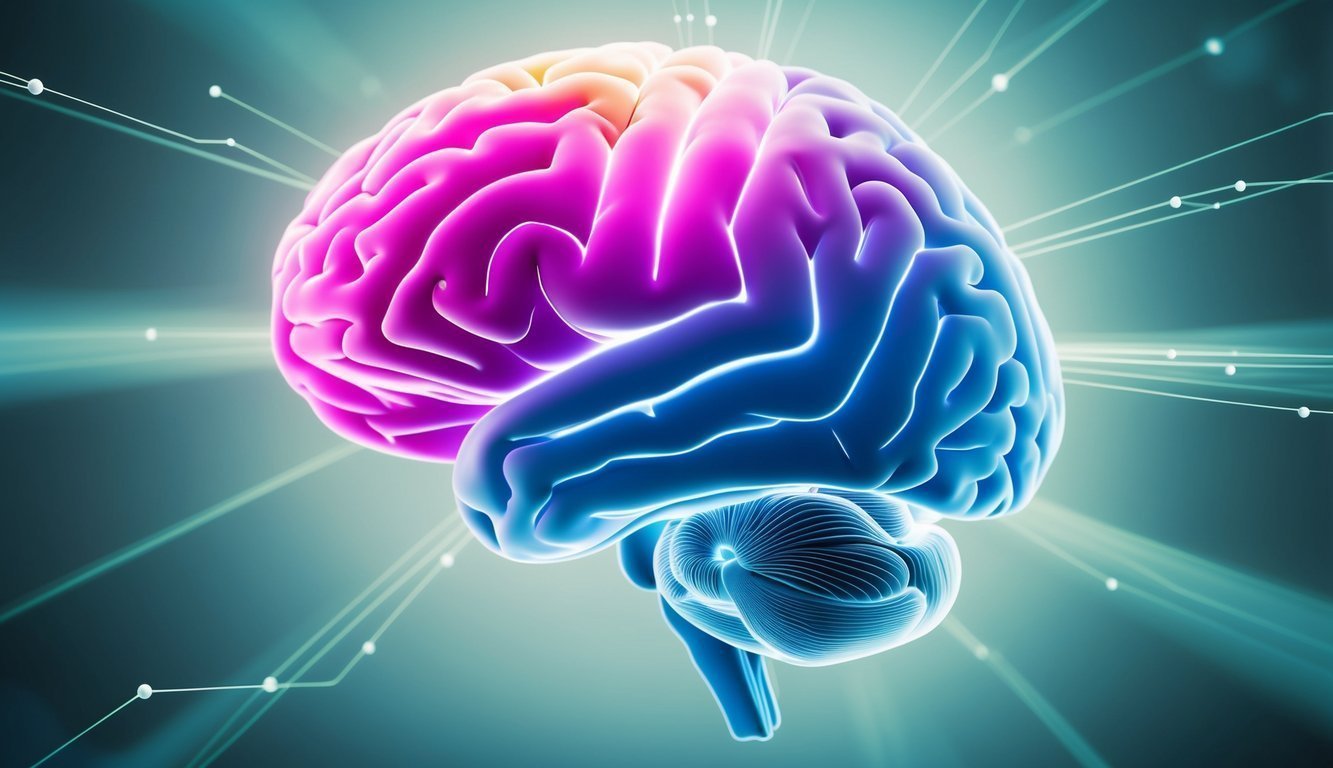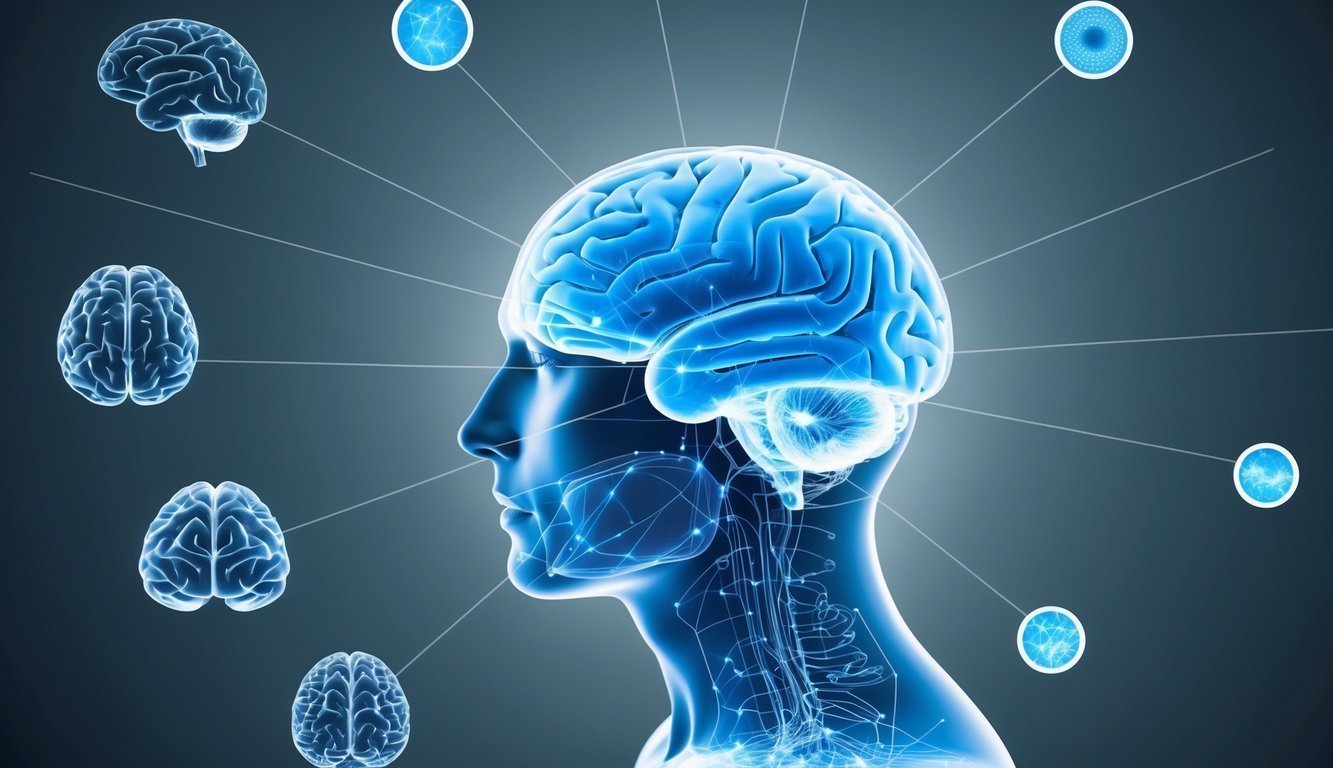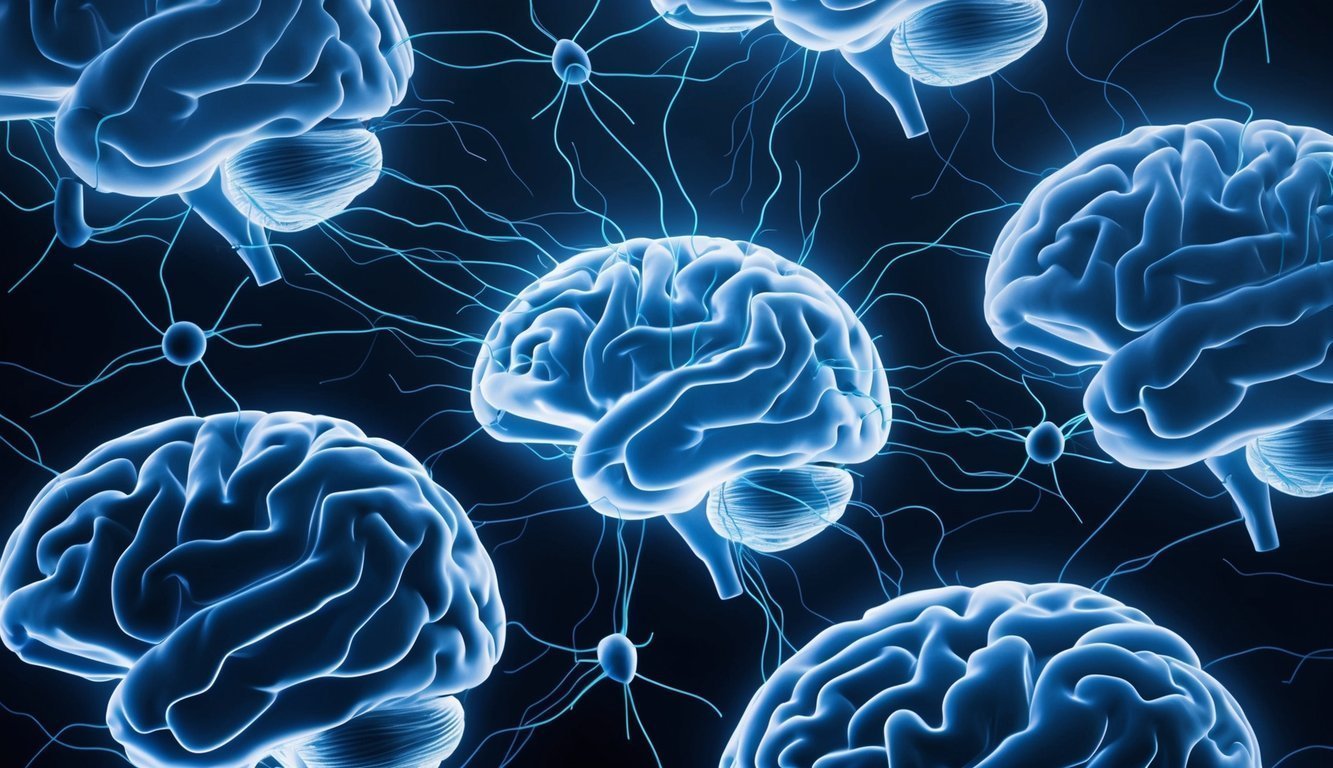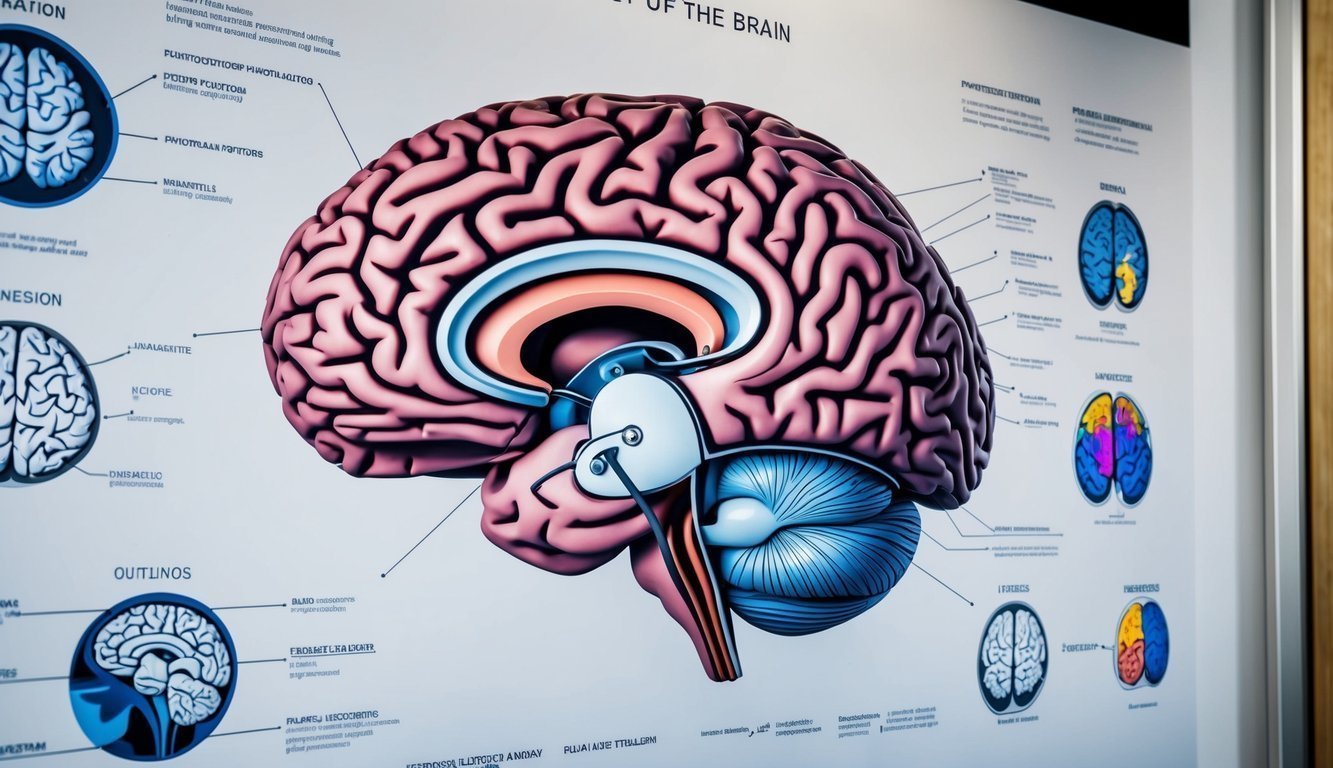PsychNewsDaily Publishers
100 Summit Drive
Burlington, MA, 01803
Telephone: (320) 349-2484
PsychNewsDaily Publishers
100 Summit Drive
Burlington, MA, 01803
Telephone: (320) 349-2484
The human brain consists of the cerebrum, brainstem, and cerebellum, coordinating cognition, behavior, and bodily functions through interconnected regions and specialized cell types.

The human brain is an intricate organ that governs cognition, behavior, and bodily functions. Its sophisticated structure comprises distinct regions and cellular elements that collaborate to process information and manage physiological activities.
The brain is divided into three principal parts: the cerebrum, brainstem, and cerebellum. The cerebrum is the largest segment, split into two hemispheres that are linked by the corpus callosum. It contains the cerebral cortex, which is vital for higher cognitive functions such as reasoning and language.
The brainstem serves as a connection between the cerebrum and the spinal cord, overseeing essential functions like breathing and heart rate. The cerebellum, positioned at the rear of the brain, is crucial for coordinating movement and balance.
The brain is safeguarded by three layers of meninges: the dura mater, arachnoid, and pia mater. Cerebrospinal fluid flows through the brain’s ventricles and along its surface, providing cushioning and nourishment.
Two primary cell types constitute the brain: neurons and glial cells. Neurons are specialized entities that convey electrical and chemical signals, forming the cornerstone of brain function. They comprise a cell body, dendrites for receiving signals, and an axon for sending them out.
Glial cells, which outnumber neurons, play essential supportive roles. They supply nutrients, eliminate waste, and insulate neurons. Various types of glial cells include astrocytes, oligodendrocytes, and microglia.
The brain’s tissue is categorized into gray and white matter. Gray matter contains neuronal cell bodies and is present in the cerebral cortex and other areas. White matter is formed by myelinated axons, facilitating communication across the brain.

The brain consists of specific regions that work collaboratively to manage various aspects of cognition, behavior, and bodily functions. While these areas have specialized roles, they extensively cooperate to support complex mental actions and behaviors.
The cerebral cortex divides into two hemispheres, each containing four lobes with unique functions. The frontal lobe is responsible for executive functions, decision-making, and motor control, housing the primary motor cortex that directs voluntary movements.
The parietal lobe is concerned with processing sensory information and spatial awareness. It contains the somatosensory cortex, which is responsible for the perception of touch and bodily awareness.
The temporal lobe plays a significant role in auditory processing, memory formation, and language comprehension. It also contributes to visual recognition and emotional processing.
The occipital lobe is primarily focused on visual processing, with the primary visual cortex located within it, receiving and interpreting visual inputs from the eyes.
Typically, the left hemisphere specializes in language and logical reasoning, while the right hemisphere is adept at spatial tasks and creative thinking.
The brainstem acts as a link between the cerebral cortex and spinal cord, regulating critical functions. It has three main segments:
The brainstem also contains nuclei that influence arousal, sleep, and consciousness, playing an essential role in maintaining homeostasis and managing involuntary bodily functions through the autonomic nervous system.
The cerebellum, located at the back of the brain, is vital for motor coordination and balance. It processes input from sensory systems and the cerebral cortex to refine motor activities.
Key functions of the cerebellum include:
Recent studies indicate that the cerebellum may also be involved in cognitive functions, including attention, language, and emotional regulation.
The limbic system consists of a network of interconnected structures that participate in emotional processing, memory formation, and motivational behaviors. Key elements include:
These structures collaborate to shape behavior and emotional responses. The limbic system also interacts with the prefrontal cortex to manage emotions and enhance decision-making.
The hypothalamus plays a critical role in maintaining homeostasis by regulating both the endocrine system and autonomic functions, influencing mood, motivation, and circadian rhythms.

The brain coordinates intricate mental processes that enable humans to engage with their surroundings, communicate, and solve problems. These cognitive functions involve complex networks of neural activity distributed across various brain areas.
Language processing relies on specialized regions such as Broca’s area and Wernicke’s area. Broca’s area manages speech production, while Wernicke’s area is fundamental for language understanding.
Memory formation and retrieval engage several brain areas. The hippocampus is particularly important for creating new memories and storing them for the long term.
Learning occurs through neuroplasticity, the brain’s ability to forge new neural connections. This mechanism is especially vigorous during childhood but persists throughout life, facilitating continuous skill development and adaptability.
Emotions notably affect memory retention and retrieval. The amygdala, part of the limbic system, enhances the significance of memories by tagging them with emotional context.
The prefrontal cortex plays a vital role in higher cognitive functions, including decision-making and problem-solving. It enables strategic planning, reasoning, and evaluation of possible outcomes.
Making decisions involves assessing options, evaluating risks, and predicting consequences. The brain synthesizes information from different sources, including prior experiences and emotional states, to guide decision-making.
Problem-solving necessitates both creative and analytical thinking. The brain utilizes methods such as breaking complex issues into smaller parts and applying analogies to familiar scenarios.
Executive functions, governed by the prefrontal cortex, help organize thoughts, sustain attention, and control impulsive behaviors during decision-making and problem-solving activities.
Perception encompasses the brain’s interpretation of sensory data. Specific cortical regions process different sensory modalities – visual, auditory, tactile, olfactory, and gustatory.
The brain assimilates information from various senses to form a coherent understanding of the environment, a process known as multisensory integration, which improves our ability to navigate and interact with the world.
Cognitive functions related to perception include attention, pattern recognition, and object identification, enabling humans to concentrate on relevant stimuli and interpret complex sensory information.
When sensory processing disorders occur, the brain may struggle to integrate sensory information correctly, which can result in challenges in daily life and social interactions.

The complex functions of the brain depend on intricate neurophysiological processes, which include signal transmission, movement regulation, and interactions with the endocrine system.
Neurons are fundamental to the brain’s connectivity. These specialized nerve cells communicate using electrical and chemical signals. Axons, which are the long extensions of neurons, transmit electrical impulses across extensive networks.
Synapses facilitate the transfer of information between neurons. Neurotransmitters released at these junctions convey signals to adjacent cells, allowing for swift information exchange throughout the brain.
Brain regions communicate through white matter tracts. These bundles of axons enable different areas to coordinate their activities. Disruptions in these pathways can result in various neurological disorders.
The brain’s motor control systems coordinate movement and stabilize posture. The motor cortex, found in the frontal lobe, initiates voluntary movements by transmitting signals to the spinal cord and muscles.
The cerebellum is crucial for maintaining balance and coordination. It refines motor commands and plays a role in learning new movement patterns. Damage to this area may lead to ataxia, which is characterized by unsteady movements.
The basal ganglia, including structures like the substantia nigra, support smooth and controlled movements, involved in starting and stopping actions. Disorders affecting the substantia nigra, such as Parkinson’s disease, can produce motor symptoms like tremors and rigidity.
The brain and endocrine system are closely interconnected. The hypothalamus serves as a bridge between these two systems, regulating numerous bodily functions.
The pituitary gland, often referred to as the “master gland,” is governed by the hypothalamus. It releases hormones that affect growth, metabolism, and stress responses, playing a crucial role in maintaining homeostasis.
The pineal gland produces melatonin, a hormone that regulates sleep-wake cycles. It responds to environmental light signals, helping to maintain circadian rhythms. Disruptions in melatonin production can lead to sleep disorders.
The hormones released by the endocrine system also impact brain function and behavior, influencing mood, cognition, and reactions to stress. This reciprocal communication ensures stability within the body’s internal environment.

The brain’s complex structure plays a pivotal role in its functionality and vulnerability to different disorders. Grasping the connections between neuroanatomy and disease yields valuable insights for the diagnosis, treatment, and prevention of neurological conditions.
Brain anatomy is closely tied to its function, and structural irregularities can lead to significant cognitive impairments. Connections among brain regions define neuronal functions, making the integrity of these networks crucial for normal cognitive and behavioral functioning.
Traumatic brain injuries can disrupt important neural connections. For instance, damage to the temporal lobe may lead to intricate visual disorders that affect perception and memory.
Strokes, which arise from blocked or ruptured blood vessels, can compromise specific brain functions based on the area affected. A stroke in the motor cortex might cause paralysis, while one in language centers could lead to aphasia.
Neurodegenerative diseases gradually harm brain structures, resulting in functional decline.
Alzheimer’s disease affects olfactory pathways early in its progression, which may account for the common loss of smell reported by patients.
Parkinson’s disease mainly impacts the basal ganglia, leading to motor symptoms like tremors and rigidity.
Research on rodent brains has provided critical insights into the mechanisms of Parkinson’s disease.
Brain plasticity, the capacity to develop new neural connections, can partially offset age-related changes, helping to sustain cognitive functions as the brain ages.
Diet and lifestyle choices notably affect brain health and functionality. Proper nutrition is vital for neurotransmitter synthesis and maintaining cellular integrity within the nervous system.
Regular physical activity increases blood flow to the brain, enhancing neuroplasticity and cognitive performance. Exercise has been shown to improve coordination, balance, and overall motor skills.
Chronic stress can adversely impact brain structure, particularly in regions like the hippocampus that are critical for memory creation. Implementing stress management strategies may help preserve brain health and functionality.
Sleep is essential for brain maintenance and cognitive activities. Adequate sleep supports memory consolidation and regulates body temperature and heart rate.
“`